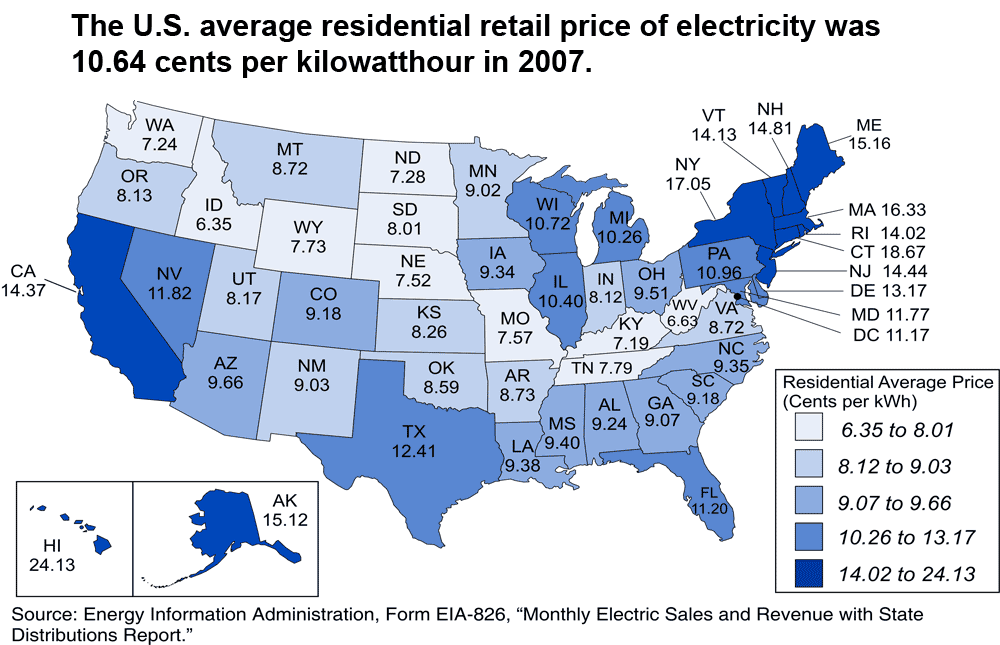Reading recently that as Microsoft was selecting the sites for their new cloud computer’s data centers they had 31 variables as input. I assume they plotted those on heat maps like this one showing the price of electricity across the United States.
Back in high school I Jane Jacob’s books on the economics of urban regions schooled me in a cynical attitude about these stories about site optimization. I recall learning that the most powerful predictor of where a large firm would sight it’s new office park was the distance from the CEO’s wife’s horses. So I wasn’t terrible surprised that one of Microsoft’s big data centers is in the country side of east of Redmond.
FYI – the drawing above is terribly misleading. For wholesale power West Texas is a steal right now, wind power. For a residential power consumer per month cost to connect to the grid tends to be a large additional cost. I wrote about that under the heading of “micro-utilitity coops” using the gas company as an example. Since then I’ve learned there is a nice term of art in the utility industry “islanding.” That’s worth reading about if your want yet another way to look at the issues around localism.
Islanding is one of the themes that runs thru the discussions of cloud computing. But it goes under various guises (security, control, specialization, cost or ops, capital equipment, bandwidth, latency). That I continue to presume that anybody who can make a credible case for building their own island will be able to negotiate a pricing deal with their cloud vendor means I’m starting to think that people who run their own data centers feel like fellow travels with other the off-grid enthusiasts. You gotta love ‘em.
